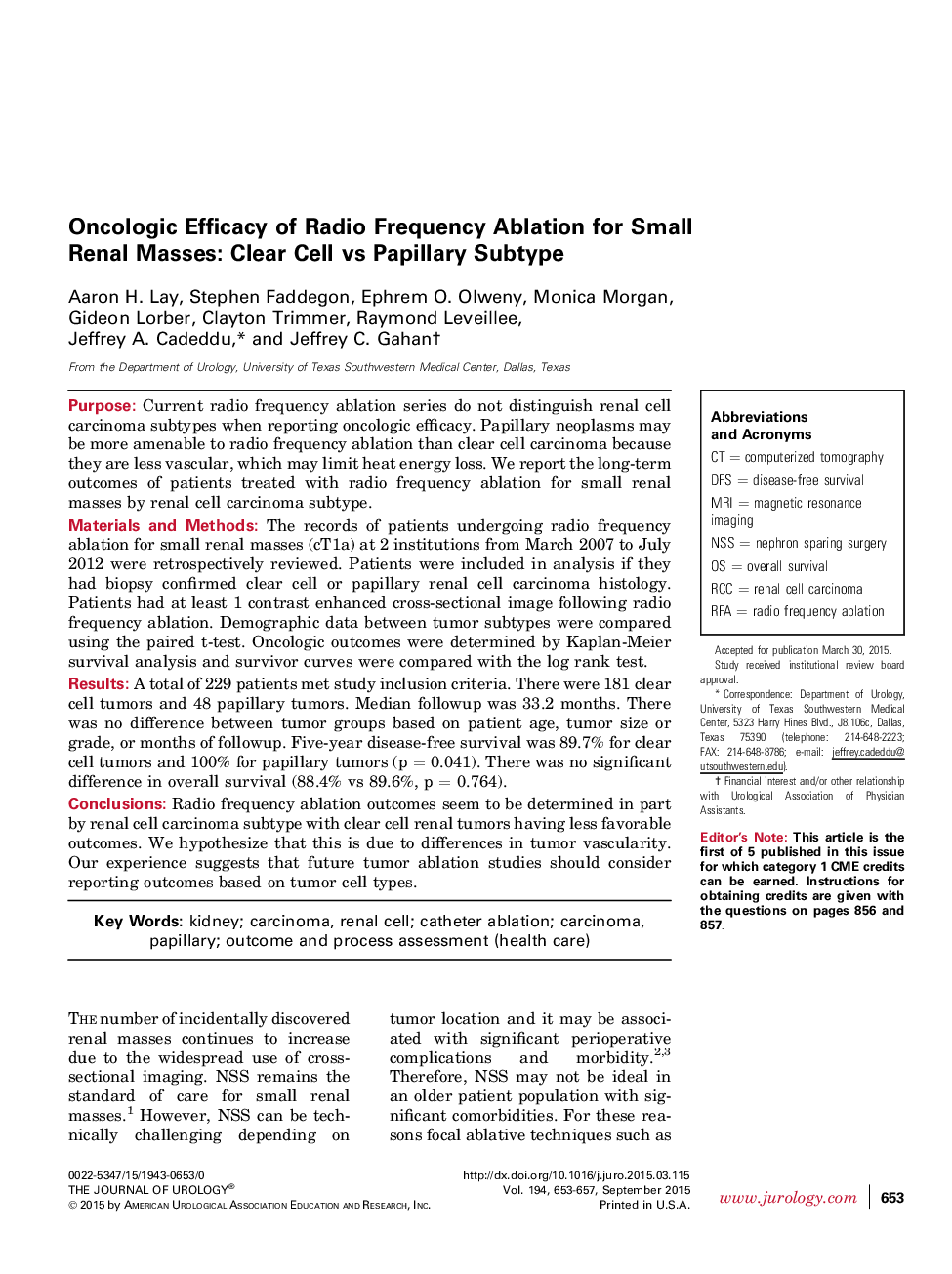| کد مقاله | کد نشریه | سال انتشار | مقاله انگلیسی | نسخه تمام متن |
|---|---|---|---|---|
| 3858085 | 1598886 | 2015 | 5 صفحه PDF | دانلود رایگان |
PurposeCurrent radio frequency ablation series do not distinguish renal cell carcinoma subtypes when reporting oncologic efficacy. Papillary neoplasms may be more amenable to radio frequency ablation than clear cell carcinoma because they are less vascular, which may limit heat energy loss. We report the long-term outcomes of patients treated with radio frequency ablation for small renal masses by renal cell carcinoma subtype.Materials and MethodsThe records of patients undergoing radio frequency ablation for small renal masses (cT1a) at 2 institutions from March 2007 to July 2012 were retrospectively reviewed. Patients were included in analysis if they had biopsy confirmed clear cell or papillary renal cell carcinoma histology. Patients had at least 1 contrast enhanced cross-sectional image following radio frequency ablation. Demographic data between tumor subtypes were compared using the paired t-test. Oncologic outcomes were determined by Kaplan-Meier survival analysis and survivor curves were compared with the log rank test.ResultsA total of 229 patients met study inclusion criteria. There were 181 clear cell tumors and 48 papillary tumors. Median followup was 33.2 months. There was no difference between tumor groups based on patient age, tumor size or grade, or months of followup. Five-year disease-free survival was 89.7% for clear cell tumors and 100% for papillary tumors (p = 0.041). There was no significant difference in overall survival (88.4% vs 89.6%, p = 0.764).ConclusionsRadio frequency ablation outcomes seem to be determined in part by renal cell carcinoma subtype with clear cell renal tumors having less favorable outcomes. We hypothesize that this is due to differences in tumor vascularity. Our experience suggests that future tumor ablation studies should consider reporting outcomes based on tumor cell types.
Journal: The Journal of Urology - Volume 194, Issue 3, September 2015, Pages 653–657
